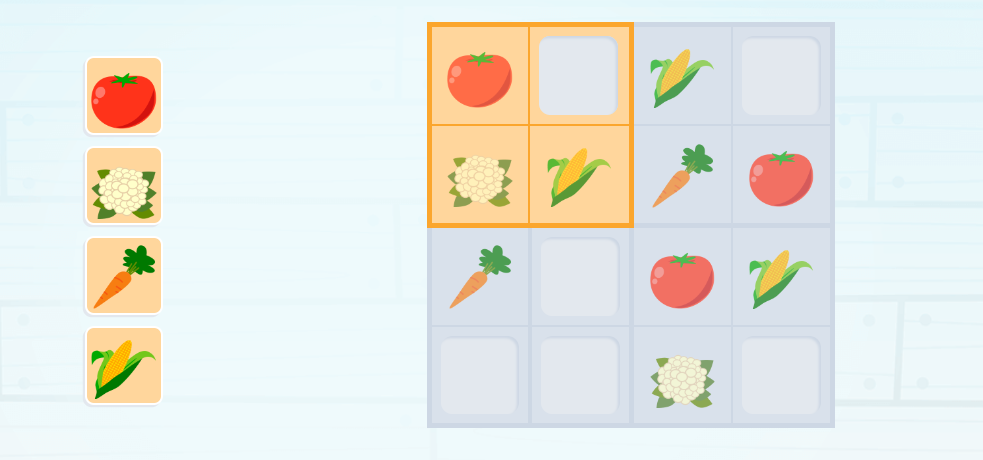Have you ever tried to solve a Sudoku? Sudokus are one of the most popular pastimes in the world. These puzzles require logic and problem-solving skills, so they can help you develop your maths skills. Let’s learn how to play Sudoku and some tips on how to solve them!
Index
What Are Sudokus?
Traditionally, sudokus are number puzzles that are played on a 9×9 grid subdivided into 3×3 smaller grids. But… that is not the only type of sudoku that exists! Nowadays, we can find sudokus of different sizes and not only numerical, but also with letters or images.
For example, take a look at this 6×6 sudoku presented in the Smartick sessions with images of fruits instead of numbers:

How to Solve Sudokus
We have seen that sudokus are puzzles in which some pieces are placed from the beginning, and you have to place the rest respecting three rules. Let’s see them as we solve this sudoku:

- The first rule is that there cannot be any repeated objects in any column.
Try it! What to put in the coloured column – a carrot, a tomato, a cauliflower or an ear of corn?

Have you thought about it? What you have to put is… a tomato!
- The second rule is that there can be no repeated objects in any row.
Try again! What to fill this row with?

And now, what’s missing? Another tomato!
- The third rule is that there can be no repeated objects in any region.
Come on! Try again! What is missing in this region?

You’ve already learned all the basic rules for doing Sudoku! Do you remember them? I’m going to write them all together again:
- There can be no repeated objects in any column.
- There cannot be any repeated objects in any row.
- There cannot be any repeated objects in any region.
Now it’s your turn to finish figuring out how to fill in this Sudoku!

Strategies for Solving the Most Difficult Sudoku Puzzles
Solving some sudokus may seem difficult at first, but there are some strategies that can help you:
- Look for the easy holes first. Look for numbers or pictures that can only go in a certain box. That is, fill in as many boxes as you can by following the rules we just saw. For example, if there is only one empty cell in a row that can contain a certain number, then that cell must have that number.
- Use logic for the hard cases. Once you have completed the easier boxes, look for patterns in the grid. For example, if there are two boxes in a column that can only have two numbers, and both numbers are the same, then those numbers cannot appear in any other box in that row.
- Guess and check. If you get to a point where you can’t solve any more boxes using logic, guess one of the possible numbers and see if you can complete the rest of the grid. If it doesn’t work, then the guess was incorrect and you should try another possible number.
Additional Tips
Here are some more tips to help you solve sudokus that may help you solve them:
- Practice with easier sudokus at first before attempting a more difficult one.
- Write down the possibilities in the boxes, so you can quickly see what options may still go there.
- Don’t give up! If you can’t solve the sudoku quickly, sometimes taking a break and trying again later can help.
In Smartick’s logic sessions, you will find a didactic sequence in which you will learn how to make sudokus, practicing from the easiest examples to others of greater difficulty. Come in, register and try our learning method for free!
Learn More:
- Learn More about a Special Type of Number Puzzle
- Learn the Basic Concepts of the Rule of 3
- How to Evaluate Number Sequences
- Variety of Series and Patterns in Math
- Practice Dividing with and without Remainders







